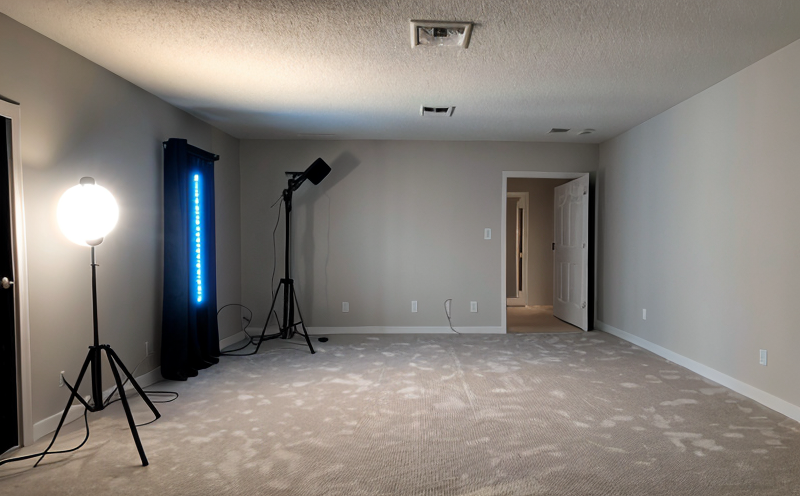Lighting Performance Testing: A Comprehensive Guide
Lighting performance testing is a critical aspect of ensuring that lighting systems meet their intended design specifications and function as expected in real-world applications. This comprehensive guide will delve into the world of lighting performance testing, exploring its importance, methodologies, and best practices.
What is Lighting Performance Testing?
Lighting performance testing involves evaluating the efficacy of a lighting system to determine if it meets specific requirements or standards. These tests can be conducted on new installations, existing systems, or during maintenance and repair procedures. The primary goal of these tests is to verify that the lighting system operates within predetermined parameters, ensuring optimal performance, efficiency, and safety.
There are various types of lighting performance testing, including:
Lumen Maintenance: Measures the reduction in light output over time due to factors like depreciation, aging, or environmental conditions.
Color Temperature and Color Rendering Index (CRI): Evaluates the color appearance and accuracy of the lighting system under different conditions.
Color Temperature Stability: Checks if the lighting system maintains a consistent color temperature throughout its lifespan.
Electromagnetic Interference (EMI): Tests for electromagnetic radiation emitted by the lighting system, ensuring it does not interfere with other electrical systems or devices.
Key Factors Affecting Lighting Performance
Several factors can impact lighting performance, including:
Lamp Type and Quality: The choice of lamp type, quality, and manufacturer can significantly affect performance.
Ballast and Driver Efficiency: Inefficient ballasts or drivers can reduce system efficacy and increase energy consumption.
Wiring and Connections: Poor wiring and connections can cause power losses, voltage drops, or overheating issues.
Environmental Conditions: Temperature, humidity, dust, and other environmental factors can affect lighting performance.
Common Lighting Performance Testing Methods
There are several methods used to evaluate lighting performance:
Visual Inspection: A visual examination of the lighting system to identify any obvious defects or malfunctions.
Instrumental Measurements: Using specialized instruments like spectrometers, photometers, or luminance meters to measure various aspects of lighting performance.
Data Loggers and Monitors: Utilizing data loggers and monitors to track and record performance metrics over time.
Some common testing methods for specific parameters are:
Lumen Maintenance Testing:
Place a new lamp in the fixture and measure its initial lumen output using a photometer or spectrometer.
Measure the lumen output after a predetermined number of hours (e.g., 1000, 2000) to determine depreciation.
Compare results with manufacturer specifications to ensure compliance.
Color Temperature and CRI Testing:
Use a color temperature meter or spectrometer to measure color appearance under different conditions.
Evaluate the color rendering index using specialized software or equipment.
QA Section
Q: What are some common mistakes to avoid during lighting performance testing?
A: Common mistakes include failing to account for environmental factors, neglecting to calibrate instruments, and not properly documenting test results.
Q: How often should lighting performance testing be conducted?
A: Testing frequency depends on various factors like system usage, age, and manufacturer recommendations. Typically, testing is performed every 1-3 years for new installations and more frequently for high-traffic or critical applications.
Q: What are some tools used in lighting performance testing?
A: Common tools include photometers, spectrometers, luminance meters, data loggers, monitors, and color temperature meters. Specialized software can also be used to analyze test results and evaluate system performance.
Q: Can I conduct lighting performance testing myself or should I hire a professional?
A: While some basic tests can be performed in-house, more complex assessments often require specialized expertise and equipment. Hiring a professional ensures accurate and reliable results, especially for critical applications like healthcare or transportation.
Q: How do I select the right instruments for lighting performance testing?
A: Consider factors like accuracy, precision, and calibration requirements when choosing instruments. Ensure compatibility with the specific lighting system being tested and consult manufacturer recommendations.
Q: What are some best practices for data analysis and reporting in lighting performance testing?
A: Best practices include:
Documenting test procedures and results thoroughly.
Calibrating instruments before each test.
Using standardized measurement protocols (e.g., IESNA).
Providing clear, concise reports with actionable recommendations.
Q: Can lighting performance testing be used to determine the lifespan of a lighting system?
A: Testing can provide insights into expected lifespan based on lumen maintenance and other factors. However, actual lifespan may vary depending on environmental conditions and usage patterns.
In conclusion, lighting performance testing is an essential aspect of ensuring that lighting systems meet their intended design specifications and function as expected in real-world applications. By understanding the importance, methodologies, and best practices outlined in this comprehensive guide, facility managers, engineers, and technicians can optimize lighting performance, reduce energy consumption, and improve overall building efficiency.
Recommended Reading
IESNA Lighting Handbook
ASHRAE Standard 90.1-2019: Energy Standard for Buildings Except Low-Rise Residential Buildings
US Department of Energys Building Technologies Office Guidelines
References
U.S. Department of Energy. (2020). Lighting Efficiency.
International Electrotechnical Commission. (2009). IEC 62026-2: Electrical equipment of buildings Part 2: General requirements, tests.
American Society of Heating, Refrigerating and Air-Conditioning Engineers. (2017). ASHRAE Standard 90.1-2016: Energy Standard for Buildings Except Low-Rise Residential Buildings.
Appendix
Additional resources and information can be found in the appendix section of this comprehensive guide.

































